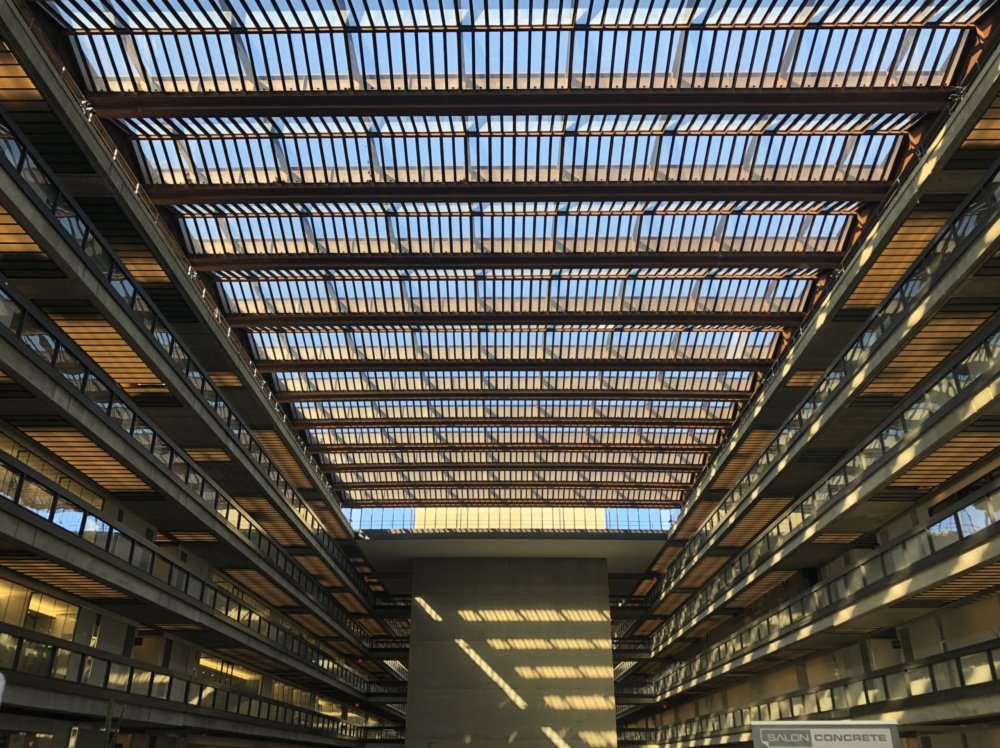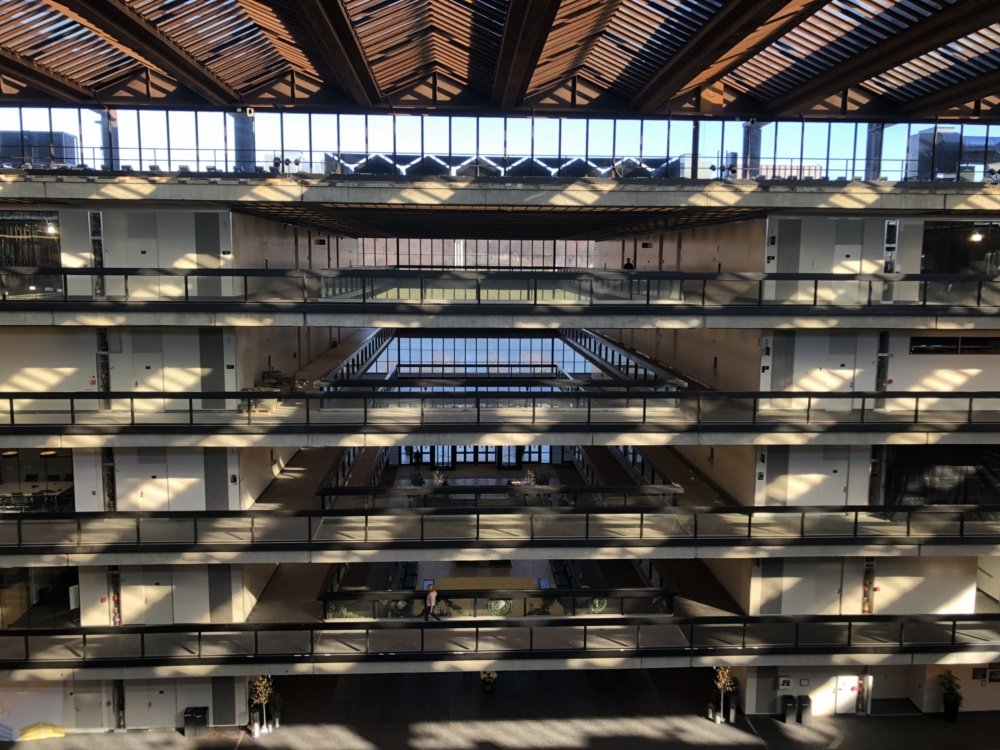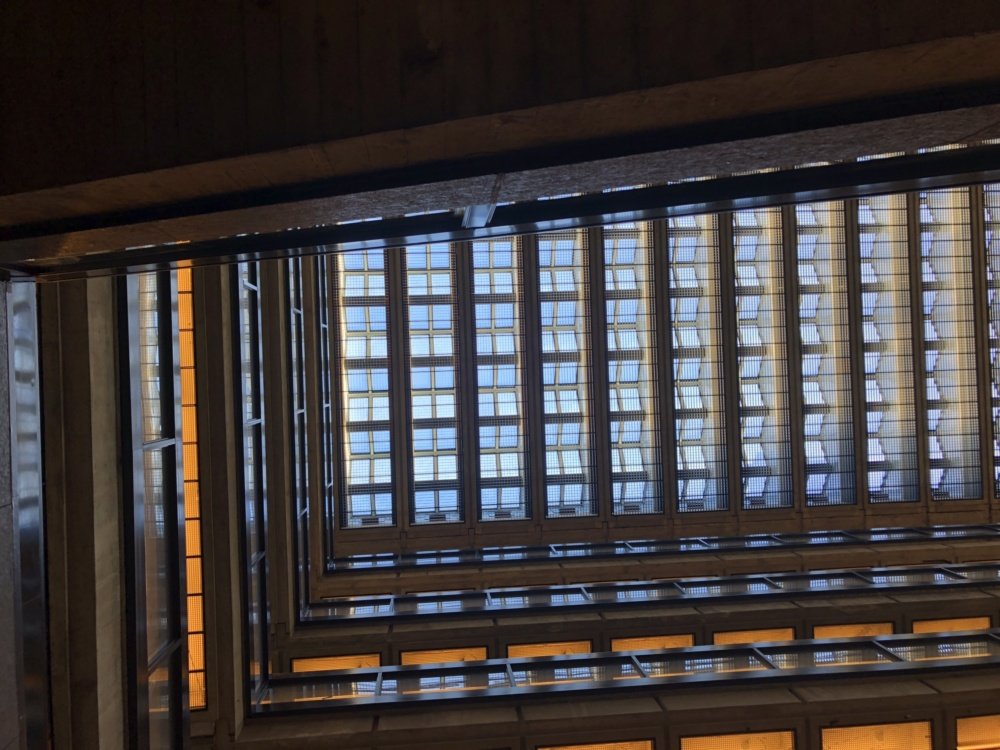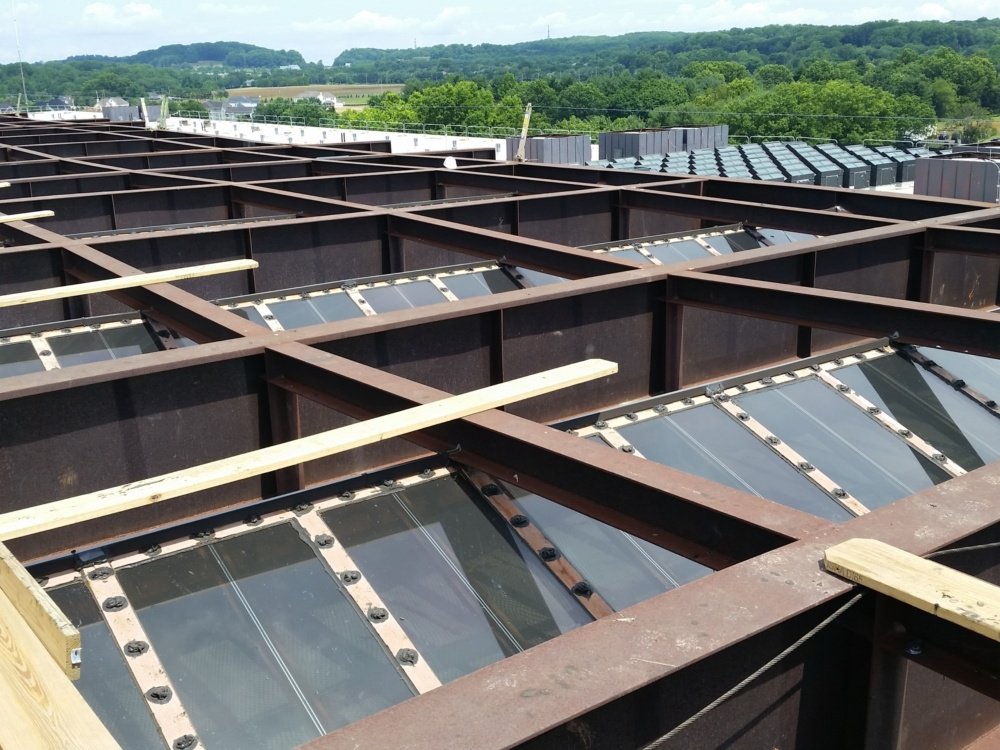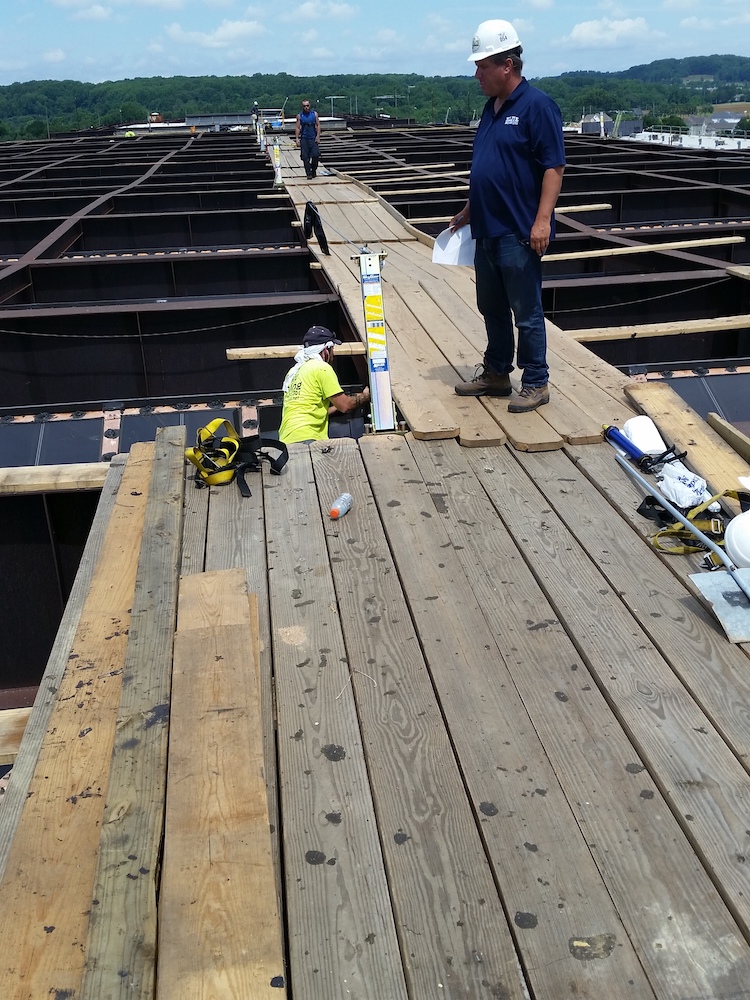The Bell Labs Holmdel Complex, completed by Eero Saarinen in 1962, is a sprawling former research building clad in reflective glass and topped with a quarter-mile-long roof. After approximately a decade of real estate juggling, the property was purchased by New Jersey’sSomerset Development in 2013, which began an extensive renovation of the property, including the replacement of the roof with the largest photovoltaic glass skylight in the United States.
In December 2018, The Architect’s Newspaper took a private tour of the renowned mid-century research lab with Somerset Development President Ralph Zucker. Much of the interior is still under a painstaking conversion designed by Alexander Gorlin Architects into contemporary tech-focused office space.

The atrium skylight consists of 3,200 panes of glass subjected to 24 different glazings and assembled in a series of ridges. Replacing the windows was fairly straightforward; the original glass was removed, then the existing frames were cleaned and then fitted with advanced weather strips to seal the building-integrated photovoltaics.
However, the sheer scale of the project and its historic importance required unique approaches to the installation of the glass panels. The installation team had to carefully install the right glazing in the correct bay and row.
“To mitigate this risk, we created a model of each of the three sky roofs and identified every glazing and the position of the glazing with each bay and row of the sky roof,” said Bell Works Chief Energy Officer/Chief Technology Officer Joel Shandelman. “This model ensured we had the exact number of each glazing and the respective permanent position of the skyroof.”

The panels are composed of a central silicon film of photovoltaic glass laminated on both sides by tempered safety glass—providing the added benefit of reducing solar heat gain with a 20 percent visual light transmittance. In total, the approximately 60,000 square-foot glass installation annually generates nearly 90 kilowatt hours.
In June 2017, after the skylight installation, the complex was added to the National Register of Historic Places.
